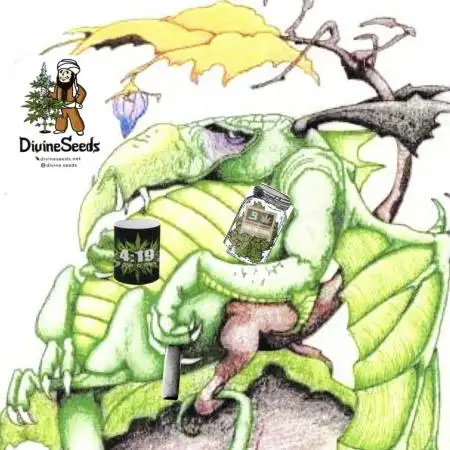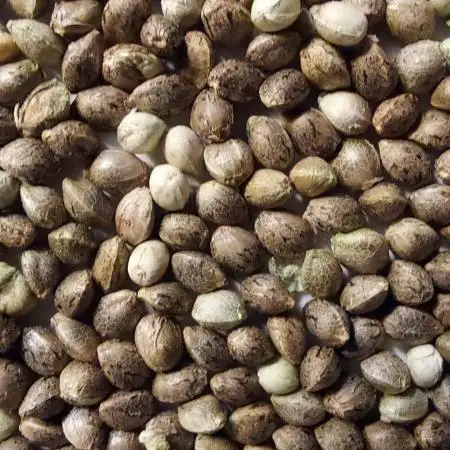The Grow Awards 2026 🏆 






















Calcium deficiency or PH problem?
BobrMarleystarted grow question 1y ago
Is this a calcium deficiency ? given the soil mixtures (recipes in germ. week) unlikely.
since they only get tap water, i checked the values
Ca2+ 65.6 mg/l
Mg2+ 17.3mg/l
that's an 3.8:1 ratio.
PH is 7.6, I never checked that tbh.
doesn't the soil compensate for that?
likes
Ultravioletanswered grow question 1y ago
Calcium and magnesium work in concert within the plant, and so for many years it was assumed you had to ensure a good ratio of calcium to magnesium in order to get good growth from your plants. We now know that it’s both simpler and more complicated than that. The ratio of calcium to magnesium in the soil isn’t important, provided there’s enough of both for whatever is growing.
However, too much calcium can cause a drop in available magnesium. The two get along and readily bind to each other. You may well wind up with a magnesium deficiency if you go too hard with a high calcium-to-mag ratio. This is especially true if the weather has been erratic – plants draw calcium from the soil in water, so if the weather has alternated from very wet to very dry, it interrupts that uptake.
The soil can only compensate if it has CEC cation exchange capacity. Tap water contains 400ppm of calcium, magnesium, zinc, chlorine, and whatever else makes things go alkaline, so it's normally above 7. This is constantly adding Anions that bind to Cation sites in the soil, which once CEC is full, the plant will no longer be able to compensate for nitrates and the medium will drift. Makes good to keep track of an organic soil EC and re-fertilize once EC drops below a desirable threshold, then It's just water until she needs a top-up, replenishing any deficiencies as they arise.
Still_Smoqanswered grow question 1y ago
You have something going on here for some time. The entire plant looks yellow. Initially indicating a N deficiency. However, PH must be correct between 6-7, or everything else is a guess as to what is wrong. Trying to do a multiple correction is okay if you’re experienced, on the other hand it can surely kill the plant if guessing wrong. Whatever is yellow will not recover in this case. Try to save what is still green-ish. Correct your PH first, see if there is an N deficiency next and correct it. Be careful with your lights at this point, a burn will be easy.
1 like
Complain
00110001001001111Oanswered grow question 1y ago
https://duckduckgo.com/?t=ffab&q=soil+ph+availability+chart&iax=images&ia=images
you can find numerous references that show Ca will be fine at 7.6.
soil can buffer and help regulate pH. This is not news, either. The more 'shit' in solution, the tougher it is to move the proverbial needle. i.e. RO will be more susceptible to ph-drift than 300ppm tap water. That does not make tap water better, it just is causality of this relationship.
if there's 10x more things diluted and have the same pH, the large amount of solutes makes it more difficult to shift the pH.
https://pressbooks.online.ucf.edu/chemistryfundamentals/chapter/ph-and-poh/
h30 and oh concentrations are outcomes of acids/bases dissolved in water. they are used to calculate pH. h30 and oh will cancel out and results 2 (molecular ratio) of h2o. this is how acids and bases neutralize each other. After that, the log of what remains after canceling each other out is the pH. or, negative log, whatever the equation says, lol. specifics are not needed here, just the gist.
the point is you can have the same pH with drastically varying amoutns of solutes and if the solute levels are lower, pH drift is easier to occur. it takes less of 'something' to throw it off. products of microbes or things you add with water etc.
1 like
Complain
Organomananswered grow question 1y ago
A pH of 7.6 will make the calcium unavailable,............max 7.0 pH for soil.
Your plant also has a major phosphorous deficiency.
How can soil "compensate" for anything?
likes
Complain
00110001001001111Oanswered grow question 1y ago
Some really bad chemsitry knowledge here. Cations do not readily bond with each other. They would repel each other. cations bond with anions, not each other and not when they are 100% disassociated in solution. They are in ionic form in that context. They would bond to different sites, not similar sites for the same reasons as why they don't readily bond with the same type of ion.
https://lawr.ucdavis.edu/classes/ssc219/biogeo/fig13.htm -- doesn't fully explain this specific thing but touches on enough relative topics.
beware of science lectures from someone with a terrence howard video professing that "1x1=2", and a bunch of other psuedo-science nonsense. the general answer might be right/memorized, but teh explanation is not accurate, lol.
likes
Complain
00110001001001111Oanswered grow question 1y ago
Not calcium symptoms. Unlikely pH, as you'd typically see more than one thing coinciding.
This looks like a clear-cut nitrogen deficiency. late stages have those dead areas too.
if the pH of the soil is 7.6 (or is that runoff measurement?) would mean the soil is not properly compensating, because it has risen quite a bit, i would expect. 7.6 shouldn't lock out N or Ca. studies indicate that you likely didn't reach full potential for growth rate, though. A slightly acidic substrate is better.
So your tap adds 66ppm of Ca and 17ppm of Mg. This alone would not be enough, but you also have 'something' in the soil that is providing this stuff right? These values alone would definitely end up with deficiencies, eventually. Mg symptoms are visible 30+ days after the problem exists/starts, but Ca issues would be visible sooner.
with soil you need trial and error to understand if it is providing enugh of 'everything' 2-3 months down the line and how much you have to supplement it. the plant and reality dictates this not some preconceived beliefs.
likes
Complain
m0useanswered grow question 1y ago
I think PH maybe at play here as well.
7.2 is a bit on the high side. I'd aim for anywhere between 6.2-6.8
The problem with hardwater is the Ca and Mg are normally in the form of Calcium Carbonate and Magnesium Oxide, these compounds are hard to breakdown and take time. Its not avilable to the plants right away and likely won't become available. Strong acids can break the bonds easily but then that PH is not great for roots. I find citric acid is great at descaling shit and helps it become more available but it does not last long so PH drift is a thing.
the amount of chlorine/chloramine in tap water is so low and I don't think would be an issue. You can always denature it by adding in vitamin c or asorbic acid and waiting a day for it to off gas. I grow my entire deck with tap water when the rains don't come and never have had an issue with it. and it gets that water 90% of the time.
I think as a quick fix you could feed it a bit more and try adding in a readily available CaMg supplement. Soil does manage a bit of its own PH with the microbes that are in it. but its not always 100% its harder in containers vs open plots.
1 like
Complain
Spike-GreenGroweranswered grow question 1y ago
If the ph is 7.6, best bet is, THAT is the problem. It's best to keep that at around 6.5 when you work with soil.
No, the soil does not compensate for that. Not all of it at least. (unless you are actively vermiculturing) Measure the ph of your feeding and measure the ph of the runoff to verify this yourself.
If your feeding is 7.6, your runoff is perhaps 7.1. That would generally be too high, leading to issues like nutrient lockouts because the plants has difficulties up taking nutrients the higher the ph.
Get the ph issue regulated asap.
Don't miss one feeding.
Don't let your pump system stand empty (or "Off") again.
Give her some tender loving care and she should bounce back in about a week.
likes
Complain
AestheticGenetixanswered grow question 1y ago
it may be a chlorine/chloramine issue especially from
1 like
Complain
Chillcuz420answered grow question 1y ago
You need a ph meter to get the ph lower 6.5 is optimal for soil, this should be step one, yes in organics it should for the most part ph it self but still optimal is to ph where it can absorb all nutes at its best, also second thought is it’s under fed, lower leaves are deficient in nitrogen and all too leaves are light green, give her food!
2 likes
Complain
Similar Grow Questions
Solved

Adamek
Problem with brown stains on the leavesHey guys, Growing in BioTabs. The plants are going to start week 4. I have just noticed that one plant (the biggest) have some brown stains one the leave. Do you have any ideas what can it be ? In my opinion she might to be hungry 🤔 maybe she needs magnesium ?
Leaves. Other
6y ago
3
3
Solved

urbanbud
early stage spots developing on young plants - nut burn, deficiency or ?? seeking opinions/experience cheers growbudshowdy growers, seeking advice re: spots developing? did recently up feed strength but only to about 2/3rd label and would appreciate experience on whether this is more likely nut burn/particular deficiency/ph/??? pics and even more detail included in my entries, cheerss
6y ago
7
6
Solved

U2malone
Should I be pruning ?She has started to flower, should I prune the leaves ? She is so dense, worried flowers will not get the space or light they need . Would Really love your feedback.
some tip curling and bottom leaves are yellowing but we did have a heat wave and I’ve done a recent pot change .
Week 10
Leaves. Other
6y ago
2
2
Solved

RKGENETX
Help plant looks deformed ?Hi was wondering if anyone can help I’m growing a french macaron and the growth is very deformed looking it’s very round leaves and quite droopy I’ve got a few other strains which are looking very healthy(see pic)but this 1 isn’t any ideas if it’s a deficiency or just genetics
Leaves. Other
5y ago
2
3
Solved

CaptainChunk
Hello! First grow. Yellow spots leaves edges curling. My 8 days old BF Wedding Cake Auto showed some yellow spots. 7th and 8th day photos for comparison!Growing in Biobizz lightmix+Biotabs Starter Kit soil. Been giving her tap water only (150-200ml) every 2 days (ph around 8), as its said in Biotabs manual. 24/0 light schedule on a 260W LED custom panel. Other identical plant growing in the same conditions seems fine. HELP PLEASE
Leaves. Color - Yellow
Leaves. Other
Setup. Seedling
5y ago
3
3
Solved

Tater3333
Spots of concern on leaves, any advice?Spots on leaves showed up, just a few leaves not all. Seems to be around the nodes where I fim'ed her at week 5. Other strain in the room is not affected. Any thoughts? I use a spout pitcher to feed them, I originally thought it was nute burn. Blue Cookies Fem.
Week 7
Leaves. Other
5y ago
1
1
Solved

fgrgeargha
First Grow 4 weeks into Veg - Let my humidity get too high for 1 night. Need help with mold/septoria/?Last 3 days I've pruned diseased leaves every morning, foliar sprayed peroxide leaves & topsoil, & added some to watering solution. Is only affecting one plant in tent. Humidity no longer issue (was waiting 4 inline fan). If I keep pulling off leaves it's going to die anyway.
Leaves. Other
Other. Bugs
Other. Mold
2y ago
3
3
Solved

GhettoStyle
Friends! tell me from the photo what kind of problem is this!!!I need help only with photos! without a diary! since I have already tried all the acceptable values of EC and pH, then the problem is something else!!! I think knowledgeable and experienced people will be able to identify the problem from the photo!!!
Leaves. Other
Setup. Other
Feeding. Other
3y ago
6
Solved

buddhi_coop
How do I get my leaves to lift back up ?How do I get my leaves to perk back up like the plant next to it? The plant on the right is the one with the leaves dropping down .
Leaves. Curl down
Leaves. Other
Other. General questions
5y ago
6
7
Solved

Amandus
Film-like substance on leavesAny ideas what's causing this "film-like" substance? Doesn't look like web, possibly trichome liquid? I'm thinking of harvesting -- about correct time -- as I'd rather harvest and cure early than lose it. My plan originally was to wait another week or so....
3y ago
2
2
Solved

Stinkygorilla
In picture 3 above the new growth on the main cola sites is curled up and contorted. pH is a tiny bit high, TDs run off is around the 400-600 mark over the week. Humidity has been intense for weeks in the high 70s to mid 80s, I'm only watering to feed once a week. Help!Week 9
Leaves. Other
8y ago
2
Solved

mertingen
What’s that? Pests?How can I get rid of this? I’ve spotted these marks on some of her leaves. Should I remove infected leaves or something else?
Leaves. Other
Other. Bugs
5y ago
1
1


























